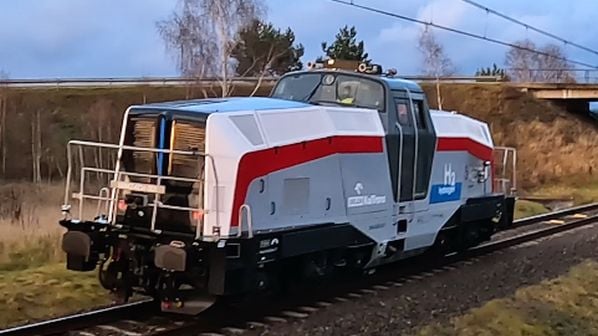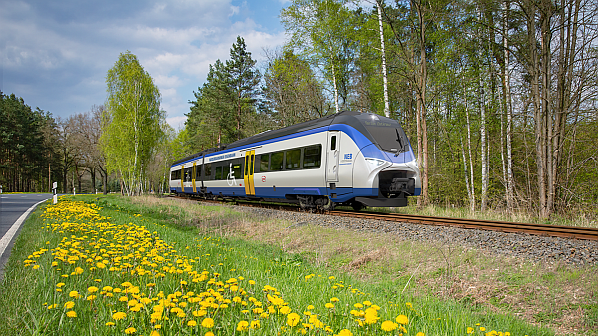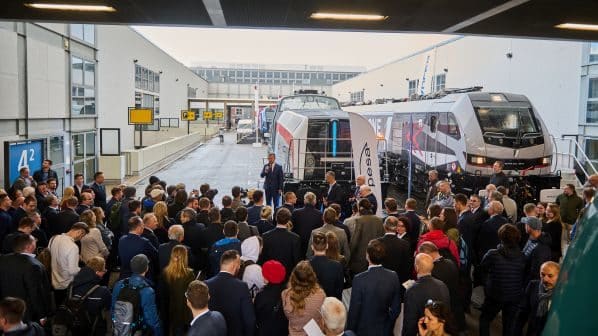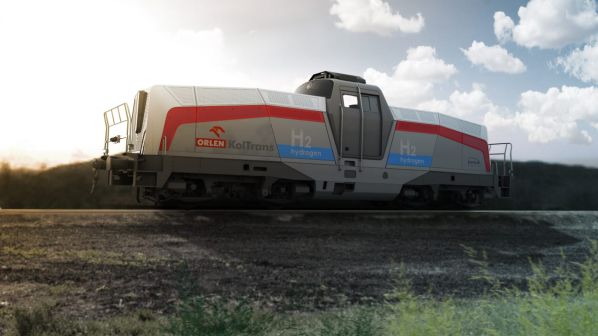SAFETY regulator the Polish Office of Rail Transport (UTK) has issued a certificate granting approval to place into service the hydrogen-powered shunting locomotive developed by Pesa.
This is the first time that a hydrogen-powered vehicle has been approved to operate in Poland.
Designated the SM42-6Dn, Pesa’s hydrogen-powered locomotive is intended to offer exactly the same traction performance as the diesel locomotives it is intended to replace, while being completely emission-free in operation.
The Bo-Bo locomotive has been fitted with two hydrogen fuel cells with a total output of 170kW. Through the traction battery, they power the locomotive’s four 180kW asynchronous traction motors, enabling a maximum speed of 90km/h.
Onboard fuel tanks have capacity for up to 175kg of hydrogen, which enables the locomotive to operate for up to 24 hours in shunting duties before refuelling is required.
During a recent demonstration at the test centre in Żmigród operated by the Polish Railway Institute, the SM42-6Dn locomotive was refuelled using a mobile refuelling station.
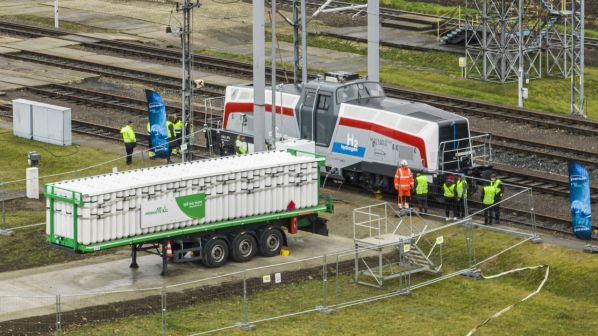
The SM42-6Dn has also been equipped with a radio remote control system that enables the driver to control it from the ground during train marshalling operations, as well as an obstacle detection and anti-collision system.
According to Dr Lech Lipiński, responsible for hydrogen projects at Pesa, experience gained on the development of the SM42-6Dn will enable the rolling stock manufacturer to significantly accelerate work on its hydrogen-powered passenger train, “the prototype of which should be ready at the turn of 2026-27.”
Pesa is working on the development of a bi-mode train equipped with a pantograph to draw traction current from the overhead supply as well as hydrogen fuel cells to power the train on non-electrified routes.
“I am glad that I could sign the approval for the first hydrogen-powered locomotive produced in Poland,” says UTK president, Dr Ignacy Góra.
“This case was special, because both European and national regulations do not specify requirements for a hydrogen drive in a railway vehicle.”
“I would like to emphasise that for both Pesa and UTK, the process of obtaining approval to allow this innovative locomotive to operate was a journey into the unknown,” says Pesa president, Mr Krzysztof Zdziarski.
“I assure you that there will be further similar approval applications, because we are already working on a passenger vehicle powered by electric traction and hydrogen fuel cells.”
